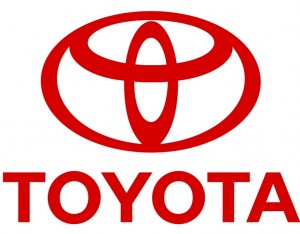Toyota has the best working relationship when it comes to its suppliers, reports a new study, something that can pay off handsomely in terms of quality, reliability and cost – and also result in getting new technologies ahead of the competition.
It was the first time in three years the Japanese maker topped the list. But Toyota actually saw its score decline, year-over-year. It landed in the number one spot only because last year’s leader posted an even sharper dip.
Honda this year came in second in the annual study by the suburban Detroit-based consulting firm Planning Perspectives. But the U.S. Big Three, General Motors, Ford and Chrysler, followed close behind, apparently reflecting their recognition that simply hammering suppliers for lower prices isn’t a long-term solution.
“In the last several years the US automakers, realizing that an adversarial approach to working with suppliers won’t work, have been working hard to work more collaboratively with their suppliers,” according to study author John Henke.
The Japanese leaders, he added, “continue dropping,” while “the domestics are getting better, and quite uniformly.” In fact, said Henke, Ford is well positioned to pass the Japanese leaders in the coming years. He also noted that GM could surpass Nissan, which held its score stable this year. In the next two to three years.
“We are pleased that suppliers have acknowledged our progress as reflected in the latest survey by Planning Perspectives, but we still have a long way to go on this journey,” said Dan Knott, Senior Vice President of Purchasing and Supplier Quality.
Developing better relations with suppliers is “paramount to us,” added Knott, reflecting the comments by other industry executives.
But building a good relationship isn’t always easy, and Detroit makers have had an especially tough time over the years. General Motors, in particular, was frequently criticized by vendors frustrated to see it focus most of its efforts on driving down costs – even if that meant risking quality, some suppliers contended.
Things turned especially sour as the domestic makers started plunging into financial trouble prior to the U.S. economic meltdown that led GM and Chrysler to ultimately file for bankruptcy.
Since then, Planning Perspectives’ data suggest, the Detroit makers have begun rebuilding relations. At the same time, Japanese makers have been running into more trouble. Why? A variety of factors could be at work, including quality issues, like those that struck Toyota, resulting in the recall of more than 10 million vehicles over the last two years. The Japanese are also scrambling as their long-held cost advantage over Detroit has begun to close.
GM, meanwhile, has taken a number of steps to improve relations, including speeding up payments for parts, a frequent complaint of vendors – though a senior executive with a German parts supplier cautioned, “They still have a long way to go. It’s still difficult to work with GM compared to Ford and some of the Japanese.”
The focus on improving relations comes as automakers have steadily outsourced much of the work that was once done in their own plants. That means they are much more dependent upon suppliers to not only hold down costs and maintain quality but also to deliver the latest technology, noted Ernst Lieb, the CEO of Mercedes-Benz U.S.
Indeed, significantly, “One area where Toyota and Honda still have a meaningful lead over the US Big Three is in their respect for suppliers’ proprietary information and intellectual property such as patents and confidentiality of technical innovations,” noted Henke. For the Japanese, that translates into suppliers being more willing to share new technology even before they have been given a purchase order.
Vendors are more likely to deliver their newest and best to “friends you trust,” said Henke.
The Planning Perspectives study has traditionally focused on U.S. and Japanese manufacturers but this year began looking at some Europeans, as well. Since there wasn’t enough data to show historical trends, the authors didn’t rank them but Mercedes-Benz would’ve topped the list, with BMW coming in third and Volkswagen sixth.

